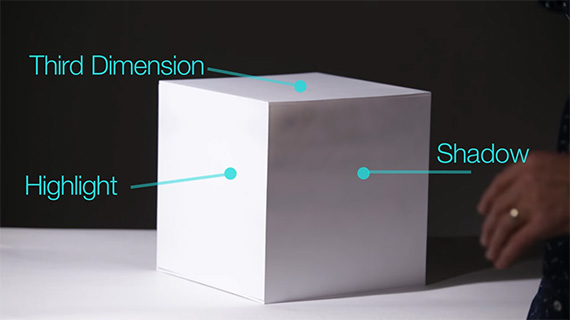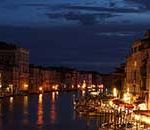In this second part of a three part series on the laws of light, Jay P Morgan demonstrates the correct ways of lighting a cube. The world isn’t a flat square or a flat circle or for that matter a flat rectangle. It’s composed of spheres, cubes, and cuboids. In other words, the world is filled with not two but three dimensional things:
Cubes or cuboids are everywhere. A delivery van, a set of packing boxes, a pair of dice. Most objects are either cubes or cuboids. Though a cube is composed of six surfaces, in a two dimensional medium like a photograph only three of those six surfaces are visible. When lighting any object it’s important that we remember these fundamental truths.
How does that affect the way you set up your lights? It’s critical that you look at lighting in the same way you look at dimensions. In the image below, a three dimensional six-sided cube has been used. We can see only three surfaces:

Lighting a cube
The best way to light the cube is to give each of these three surfaces a different light value. If they’re all uniformly lit, the final image would be flat and dimensionless.
As Morgan raises the key light, the difference in lighting is apparent. The top and the left side of the cube are now similarly lit. As he brings the light down, the left side appears brighter than the top side.
To create background separation, you can reposition the key light so that some of it falls on the background and therefore creates a nice separation from the background, which is now properly lit. Or, you can use a second light—a background light—to light the background and get a more distinct result.

Background Separation
There’s more than one way of lighting a cube. You don’t always have to use strong contrasting light. You can just as easily use bounced light.

Bounced Light
One more note about lighting a cube is that the side of the cube that has been lit by the main light source becomes the highlight side. The side of the cube that is away from that light becomes the shadow or dark side. This simple tip can be used to choose whether you want to show a broader highlight side or a broader shadow side to the camera.
Try experimenting with a cube to see how all of this information comes together.
For further training: using a sphere understand light in photography
Like This Article?
Don't Miss The Next One!
Join over 100,000 photographers of all experience levels who receive our free photography tips and articles to stay current:






Leave a Reply